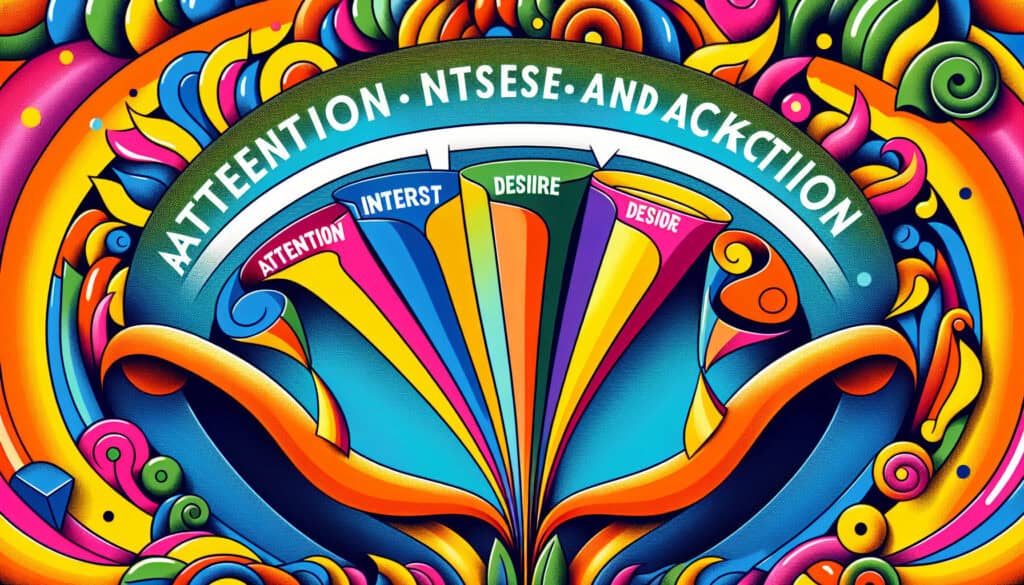A commercialisation and advertising model that describes the stages a consumer goes through before making a purchase.
- Méthodologies : Économie, Lean Sigma, Fabrication, Résolution de problèmes, Qualité
Modèle AIDA

Modèle AIDA
- Positionnement de la marque, Expérience client, Cartographie de l'itinéraire du client, Commercialisation, Stratégie marketing, Développement de produits, Gestion de produits, Proposition de valeur
Objectif :
Comment il est utilisé :
- The AIDA model consists of four stages: Awareness (or Attention), Interest, Desire, and Action. It is used to guide the creation of marketing and advertising campaigns.
Avantages
- Provides a simple and effective framework for creating marketing campaigns, helps to understand the customer journey, and can be applied to a wide range of marketing channels.
Inconvénients
- Is a linear and simplified model of the customer journey, may not be applicable to all types of products or services, and does not account for post-purchase behavior.
Catégories :
- Clients et marketing, Conception de Produits
Idéal pour :
- Guiding the development of marketing campaigns that effectively move consumers through the purchase funnel.
The AIDA model finds its applications across various sectors, particularly in consumer goods, technology, and services, where understanding buyer behavior and engagement is paramount. In the project execution phase, teams can adopt this model during market research and product launch initiatives, providing a sequential approach that aligns marketing efforts with consumer expectations. For example, in the automotive industry, advertisers may capture Attention through eye-catching visuals or thrilling advertisements, spark Interest by demonstrating features or innovations, create Desire through emotional storytelling or emphasizing safety and performance, and ultimately prompt Action with promotions or easy access to purchase channels. This methodology is not limited to marketing teams; it can involve cross-functional collaboration with product designers and engineers to ensure that the messaging aligns with the actual user experience, enhancing authenticity. Using the AIDA model can also guide businesses in refining their customer relationship management strategies, as it facilitates the development of targeted content for multiple communication platforms, enhancing engagement on social media, email newsletters, and online advertising. Consequently, its simplicity encourages frequent reassessment and adaptation in campaigns, making it suitable for both established brands and startups looking to establish a foothold in competitive markets.
Principales étapes de cette méthodologie
- Create awareness through targeted advertising and promotions. <li Draw interest by presenting unique features and benefits of the product. <li Cultivate desire by showcasing testimonials and compelling use cases.
- Encourage action with clear calls to action and urgency in messaging.
Conseils de pro
- Utilize data analytics to refine targeting strategies during the Awareness phase, enabling more personalized outreach that captures attention effectively.
- Incorporate storytelling in the Interest and Desire stages to create emotional connections, making the proposition de valeur resonate deeply with the audience.
- Implement A/B testing across various platforms to optimize Calls to Action in the Action phase, ensuring maximum conversion rates.
Lire et comparer plusieurs méthodologies, nous recommandons le
> Référentiel méthodologique étendu <
ainsi que plus de 400 autres méthodologies.
Vos commentaires sur cette méthodologie ou des informations supplémentaires sont les bienvenus sur le site web de la Commission européenne. section des commentaires ci-dessous ↓ , ainsi que toute idée ou lien en rapport avec l'ingénierie.
Contexte historique
1960
1980
1983
1990
1995
2000
2010
1950
1980
1980
1986
1994
1995
2000
(si la date est inconnue ou n'est pas pertinente, par exemple "mécanique des fluides", une estimation arrondie de son émergence notable est fournie)














Articles Similaires
Calculateur de METS en calories
Méta-analyse
Cartographie des messages
Diagrammes du modèle mental
Forces de poussée et de traction maximales acceptables
Planification des besoins en matériaux (MRP)